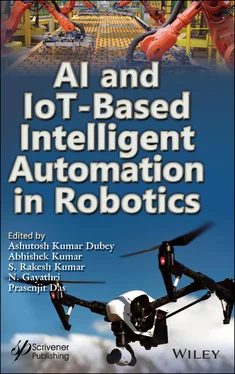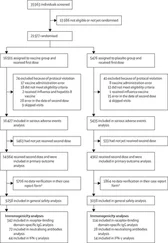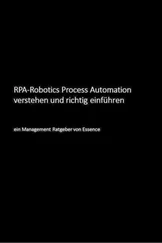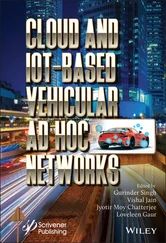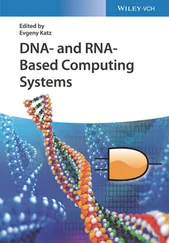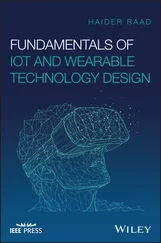15. Robotic future of patient care, in: E-Health Insider, 2007-08-16, https://web.archive.org/web/20071121041811/ http://www.e-health-insider.com/comment_and_analysis/250/robotic_future_of_patient_care.
16. Spyros, G.T., Synergy of IoT and AI in Modern Society: The Robotics and Automation Case. Robot Autom. Eng. J., 3, 5, 555621, 2018.
17. Cohen, M. H., Cohen, M. H., Giangola, J. P., Balogh, J., Voice user interface design. Addison-Wesley Professional, page 5-6, 2004.
18. Bogue, R., The role of artificial intelligence in robotics. Ind. Robot, 41, 2, 119–123, 2014. https://doi.org/10.1108/IR-01-2014-0300.
19. https://www.humanbrainproject.eu/en/follow-hbp/news/breakthrough-in-construction-of-computers-for-mimicking-human-brain/
20. https://www.scientificamerican.com/article/a-new-supercomputer-is-the-worlds-fastest-brain-mimicking-machine/
21. Fedak, V., Durovsky, F., Uveges, R., Kyslan, K., Lacko, M., Implementation of Robot Control Algorithms by Real-Time Control System. Int. J. Eng. Res. Afr ., 18, 112–119, 2015.
22. Thrun, S., Probabilistic Algorithms in Robotics, in: AI Magazine, vol. 21, no. 4, 2000.
23. http://www.robotiksistem.com/robotics_applications.html
24. Vermesan, O., Bröring, A., Tragos, E., Serrano, M., Bacciu, D., Chessa, S., Gallicchio, C., Micheli, A., Dragone, M., Saffiotti, A., Simoens, P., Cavallo, F., Bahr, R., Internet of Robotic Things – Converging Sensing/Actuating, Hyperconnectivity, in: Artificial Intelligence and IoT Platforms, 2017, 10.13052/rp-9788793609105.
25. https://interestingengineering.com/15-medical-robots-that-are-changing-the-world
26. http://www.indiandefencereview.com/military-applications-of-artificial-intelligence/
27. Kim, M. and Kang, K.C., Formal Construction and Verification of Home Service Robots: A Case Study, in: Automated Technology for Verification and Analysis. ATVA 2005. Lecture Notes in Computer Science, vol. 3707, D.A. Peled and Y.K. Tsay (Eds.), Springer, Berlin, Heidelberg, 2005.
28. Parviainen, J., and Coeckelbergh, M., The political choreography of the Sophia robot: beyond robot rights and citizenship to political performances for the social robotics market. AI & Society , 1–10, 2020.
29. https://www.forbes.com/sites/zarastone/2017/11/07/everything-you-need-to-know-about-sophia-the-worlds-first-robot-citizen/#2880b5d946fa
30. Peterson, B., I met Sophia, the world’s first robot citizen, and the way she said goodbye nearly broke my heart. Enterprise, in: Digital version, 2017, Retrieved of http://uk.businessinsider.com/sophia-the-words-first-robot-citizen-nearly-broke-my-heart-2017-10.
31. http://news.mit.edu/2019/mit-mini-cheetah-first-four-legged-robot-to-backflip-0304
32. Four-legged Robot, ‘Cheetah,’ Sets New Speed Record, in: Reuters, 2012-03-06, Archived from the original on 2013-10-22.
33. Upbin, B., IBM Opens Up Its Watson Cognitive Computer For Developers Everywhere, in: Forbes, November 14, 2013, https://www.forbes.com/sites/bruceupbin/2013/11/14/ibm-opens-up-watson-as-a-web-service/.
* Corresponding author : n.gayathri@galgotiasuniversity.edu.in
3
Robotics, AI and IoT in the Defense Sector
Rajiv Kumar Modanval, S. Rakesh Kumar*, N. Gayathri and Sandeep Kr. Sharma
School of Computing Science and Engineering, Galgotias University, Uttar Pradesh, India
Abstract
As the world grows and advances, so too does technology. Rapid tech advancements have paved lots of pathways that have given us various types of applications for robotic processes. In this chapter, some of the most common robots used for the defense sector will be described; also proposed are some robots for creating helping hands for our armies along with more modernized and effective robots that further advance our defense systems via some of the most trending technologies like IoT and AI. The defense sector is one of the most crucial elements of any country in which they invest the most. According to data, India invests around $40 billion on its army and defense systems. But nowadays, with the availability of such modern and advanced technologies, the overall expenditure can be minimized. Robots can perform far better than humans as they can provide untired service to the nation with little investment and less maintenance. Robots are useful in doing repetitive task like walking at a border to secure it. Artificial intelligence is used to make robots capable of understanding the situation and react according to it. The internet of things plays a big role in connecting the robots so they can share data with each other and perform their task sefficiently. Robots also ensure zero life loss and high security at a very low cost.
Keywords:Artificial intelligence (AI), internet of things (IoT), robotics, automation, robots, machine learning
According to Sun Tzu, a Chinese general, military strategist, writer and philosopher who lived in the Eastern Zhou period of ancient China, “The supreme art of war is to subdue the enemy without fighting.”
Robotics is a rapidly growing field of technology with potentially significant applications in the defense sector which can play a significant role in warfare. Nowadays, the United States of America using drones to target enemies in countries like Afghanistan and Pakistan is the best example of the use of robotics in warfare [10]. The United States Department of Defense and countries like China, Russia, and India are developing robots for a wide range of military operations. Artificial intelligence gives robots the ability to make a decision on what to do, how to react, etc. The IoT ensures better connectivity between robots to perform tasks effectively. The combination of AI, IoT and robotics helps to make robots or automatic weapons which can destroy the enemy within a second without losing a single life from our side. To understand the role of AI in robotics first we have to understand the difference between an autonomous system and an automated system. Automated systems are based on computer reasoning that uses clear if–then rules, which are rule-based and return a fixed output for each input. An autonomous system will not return a fixed output for each input, it collects the data through sensors, analyzes the situation, and then takes the decision on action. Its action can vary from situation by situation. All autonomous systems that interact with the world will construct a database which stores arange of behaviors and continuously maintains it.
3.2 How Robotics Plays an Important Role in the Defense Sector
Humans are always searching for new kinds of weapons for warfare. They have always made weapons based on the current technology, availability of resources, etc. Humans made their first weapon, called a spear, in 400,000 BC in a part of Germany between 40,000 to 25,000 BC and they developed a flexible dot in Northern Africa which can kill a deer in a 40-meter range. Arrows and bows were developed in 20000 BC, with some believing they were developed much earlier, pointing to a 60000 BC old stone that may or may not have an arrowhead.
By 1000 BC, swords were entwined with Celtic folklore and custom in Britain, mirroring their significance in the public arena. The first rocket, known as “fire arrow,” was developed in China between 800 to 1300 AD [13]. As the technology grew, humans invented many weapons like guns, tanks, missiles, nuclear bombs, and hydrogen bombs. Robotics is being used to eliminate human interaction in warfare, with many countries currently working on this and some countries also working on innovating new weapons [17].
Читать дальше
